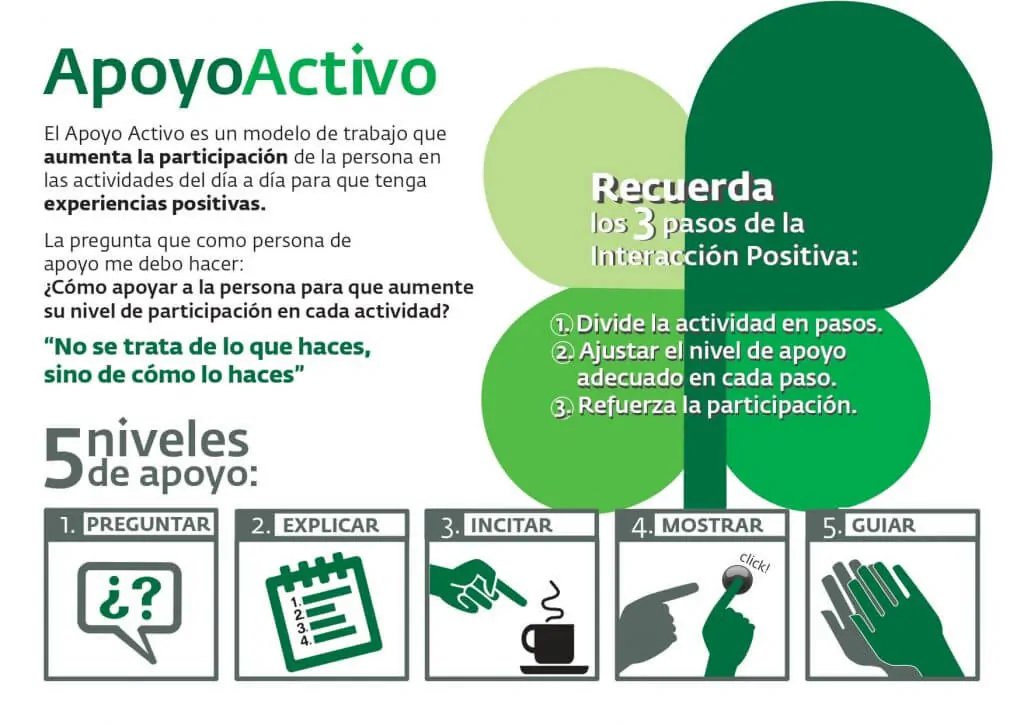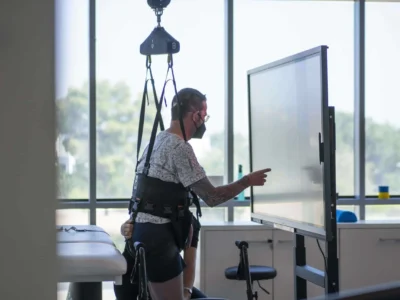Psychologist Lucía González presents in this article the behavior problems and how to address them through preventive methodologies.
Imagine that no one speaks to you directly, but that they talk about you and your problems in your presence, that the people around you always interrupt your attempts to do something and do it for you, that they don’t let you make any decisions, that no one asks you what you prefer to do, eat or wear. Imagine that they are only focused on your behavior problems.
It was already 30 years ago that Dr. Judith LeBlanc wrote these words to foster empathy regarding the quality of life of people with significant support needs.
Did you imagine it? How would you feel? What would your behavior be?
Behavior problems
A behavior problem, challenging and/or complex behavior “is considered to be any behavior culturally abnormal in such intensity, frequency or duration that it is likely that the physical safety of the person or others is at serious risk, or that it is likely to limit use of the opportunities offered by the community or even deny access to those opportunities.” (Emerson, 1995)
Types of behavior problems
- Self-injurious behavior: when the person causes pain to themselves, by hitting, biting or scratching.
- Heteroaggressive behavior: when they cause pain to other people or animals.
- Destruction of objects: the person breaks, destroys or damages objects or furniture.
- Disruptive behavior: interruptions of activity through shouting, complaining, crying or unmotivated laughter or seeking a fight.
- Socially offensive behavior: encompasses anything that is offensive to others, such as urinating in inappropriate places, using coarse language, threatening, shouting or swearing.
- Stereotypies: repetitive behaviors, such as rocking, pacing, shaking or teeth grinding.
- Noncompliant or negativistic behavior: failure to follow rules or refusal to carry out relevant activities.
- Withdrawal or lack of attention: isolation, inactivity, lack of concentration or speaking negatively about oneself.
If you completed the reflective exercise I proposed at the beginning of the article, you will have already realized that any person in certain circumstances can display challenging behavior.
What will it depend on then that these behaviors appear? Will it be only a matter of the person or the disability? Or, on the contrary, will it have something to do with the environments in which we move or the opportunities we have to guide our own lives?

Subscribe
to our
Newsletter
Person-centered services
The meaning we give to our own lives, the activities we carry out in our daily life, all those small or large decisions that we sometimes almost make without realizing it, the possibility of evaluating different options, of making mistakes and correcting them, mean that even when we sometimes feel like shouting, breaking things or any other challenging behavior, we do not do it.
The work of Plena Inclusión
For this reason, at Plena Inclusión we have been working for many years to implement person-centered services so that people with intellectual disability also have these opportunities.
Some of these person-centered services are:
- Quality of Life Model
- Person-centered planning
- Life project
- Promotion of healthy environments
- Change of beliefs and support styles
- Preventive methodologies
Preventive methodologies for behavior problems
Below we will cover three different methodologies to tackle behavior problems.
Active Support
Active Support is a systematic approach that helps people with intellectual or developmental disabilities to participate in everyday and meaningful activities, achieving improved quality of life and personal development. It is a person-centered approach that promotes personalized supports responding to the interests and needs of each person (K. Lowe and E. Jones, 2015).
The goal of Active Support is the person’s active participation in meaningful activities for them, providing the support necessary for each of the small steps of the activity.
In Active Support, reinforcement takes on great importance—not the result, but the person’s participation, engagement and connection to that activity important to their life.
This participation ensures that people have greater quality of life, greater satisfaction, better relationships with their support people and greater control over their lives.
As a result, challenging behaviors are significantly reduced.

Positive behavioral support
Positive behavioral support is a set of strategies to reduce or eliminate maladaptive behaviors through environmental and setting improvements and the teaching of alternative skills.
The principles on which positive behavioral support is based are:
- Challenging behavior has a function. The person usually pursues a legitimate goal, the problem is the behavior used to achieve it.
- People do not intend to cause harm, although sometimes this happens.
- Behaviors are related to the contexts where they occur.
- Support plans must take into account the person’s values, their interests, preferences and aspirations.
Reduction of restrictions
Closely related to the philosophy and beliefs behind all these methodologies is the individual and collective reflection on the practices we carry out in our relationships with people with disabilities.
Control environments, limitations or restrictions that we tell ourselves are “for their own good” are not always so, since we limit the person’s ability to make their own decisions and at times make their own mistakes.
Who hasn’t enjoyed the pleasure of junk food even knowing that it is not healthy?
Summary
If we give life meaning, any other behavior that does not lead us to our purposes will not make sense.
Each of us, even if not explicitly, has a life project, a plan, values and we steer our lives toward them; we even go through unpleasant situations to achieve goals that are meaningful to us.
People with significant support needs, like anyone else, have those values, those goals, but, like everyone, they need support, opportunities, chances to choose, to make mistakes…
Ultimately, to guide their own life, just as they want it to be.
If you liked this post about the behavior problems and preventive methodologies, you may also be interested in other NeuronUP posts:
“This article has been translated. Link to the original article in Spanish:”
Problemas de conducta y metodologías preventivas







 Emotional regulation from the perspective of neuropsychology
Emotional regulation from the perspective of neuropsychology
Leave a Reply